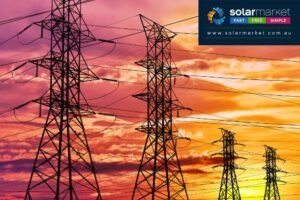 Image by NASA Scientific Visualization Studio – https://svs.gsfc.nasa.gov / Goddard Space Flight Center – https://www.nasa.gov/centers/goddard [Public domain], via Wikimedia Commons James Whitmore, The Conversation
Image by NASA Scientific Visualization Studio – https://svs.gsfc.nasa.gov / Goddard Space Flight Center – https://www.nasa.gov/centers/goddard [Public domain], via Wikimedia Commons James Whitmore, The Conversation
Australia needs to “reset” discussions related to climate policy, according to the government’s advisory body on climate policy. The Climate Change Authority makes the argument in the second draft report of its special review on policy.
In a statement released today, acting chair Stuart Allinson said, “it is time for a fresh look at the range of policy options… with a view to ‘resetting’ Australia’s public discussion”.
“In recent years, the climate policy conversation has become highly polarised. Different policy options have attracted both strong support and criticism. At times it appears, amid the heated debate, we have lost sight of the key goal,” he said.
The authority is looking at a range of policies to meet Australia’s 2030 climate target including emissions trading schemes, renewable energy policy, energy efficiency schemes, and policies similar to the government’s current Emissions Reduction Fund.
As part of the same review in July 2015, the authority recommended Australia reduce its emissions 30% below 2000 levels by 2025, and 40-60% below 2000 levels by 2030. In August, the government announced a target of 26-28% below 2005 levels by 2030, equivalent to 22% below 2000 levels.
The government has outlined a range of policies to meet the target including extending the Emissions Reduction Fund beyond 2020, vehicle emissions standards, and other policies to be developed.
Katherine Lake, research associate in climate law at University of Melbourne said the review was an opportunity to put a “toxic and polarised debate behind us” after Malcolm Turnbull replaced Tony Abbott as prime minister.
She said Australia would ultimately need a price on carbon supported by both parties.
“To meet our 2030 reduction target, and beyond, in a cost-effective manner, we will need bipartisan support to put a price on carbon, something Australia has only had for a brief time while Malcolm Turnbull was leader of the opposition.”
“A mandatory emissions trading scheme (similar to the EU, China, California) is likely to be most effective, but a broad-based baseline and credit scheme, similar to the government’s safeguard mechanism, could also be implemented.”
But Ben Parr, research associate at the Melbourne Sustainable Society Institute, warned emissions trading discussions would need to avoid “revisiting a stale past”.
“Australia could reinstitute an emissions trading scheme, but it would have to be significantly more environmentally effective than the Rudd-Turnbull deal in 2009.”
The deal struck between then-opposition leader Turnbull and prime minister Rudd saw compensation to the coal industry and electricity sector increased by billions of dollars, and made further concessions to the gas industry.
Parr said the government’s current policy, the Emissions Reduction Fund, was inadequate.
“It is a system that gives subsidies, public money, to big polluters to encourage them to emit less pollution. A better, principled, approach is the polluter-pays principle, which ensures that those doing the damage pay for it,” he said.
He also said the fund was “somewhat incompatible with the policy approach of Australia’s key strategic and trading partners such as the US, Europe, and China, which makes international linkage difficult – that is, the flow of ‘carbon credits’.”
The terms of reference for the review require the authority to consider whether an emissions trading scheme would harm Australia’s international competitiveness. According to Parr, “this does not bode well for strong action on climate change under the Turnbull government.”
As seen under governments since Hawke, Parr said this framing makes “some policies and international negotiating positions seem natural and necessary, while excluding others. Simply, this discourse determines what policies are possible, and what aren’t.”
The authority will issue its final report in June 2016.
James Whitmore, Editor, Environment & Energy, The Conversation
This article was originally published on The Conversation. Read the original article.










